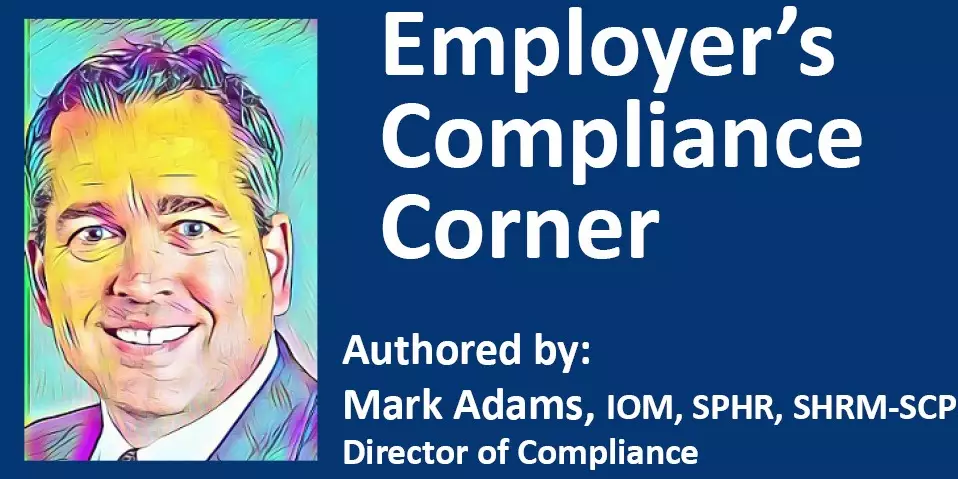
For companies that have 100 or more employees, the OSHA Emergency Temporary Standard (ETS) served as an albatross around their necks as the New Year began. Tracking who is vaccinated, who was not, who needs to be tested weekly, are they testing properly, will we be able to maintain the records properly, are we communicating the proper CDC information to employees on the subject of vaccines, do we have a COVID-19 policy, what are the penalties for non-compliance.
Many facets indeed brought frustration and anxiety for the managers that would have owned those responsibilities.
However, the United States Supreme Court lifted the albatross by reinstating a stay effectively blocking OSHA from moving forward with the ETS.
At first blush, it provides a sense of relief. After all, OSHA is not directing employers what they have to do when it comes to their employees either getting tested or getting vaccinated, and not all of the administrative aspects that encompass that.
Nevertheless, is that the end? Even if the ETS is no more, employers should lose sight of the big picture in all of this.
There are some legal maneuvers, which technically are on the table for the Sixth Circuit to reconsider the case and allow the case to even to land back at high court. However, most analysts believe this would be an exercise in vain given the majority’s opinion.
Seizing upon the court decision, OSHA could go back to the drawing board and tailor a more narrowly defined standard that is more occupation-based. As noted in the majority opinion, “although Congress has indisputably given OSHA the power to regulate occupational dangers, it has not given that agency the power to regulate public health more broadly.” However, that path is not going to happen tomorrow (though one has to wonder if they have been contemplating a “Plan B” of sorts while the case was going through the appellate process).
Finally, there lies another enforcement path – the General Duty Clause. According to the OSH Act of 1970, “each employer…shall furnish to each of his employees employment and a place of employment which are free from recognized hazards that are causing or are likely to cause death or serious physical harm to his employees.” [29 USC 654].
What does this mean? The General Duty Clause is a catch-all provision for OSHA to hold employers accountable for hazards that could have been avoided or correctable whether a defined standard existed to address a situation or not.
While the ETS is no longer in effect, OSHA has other general guidance that remains out there preventing and mitigating the spread of COVID-19 in the workplace: https://www.osha.gov/coronavirus/safework . While not rising to a defined standard, this guidance provides suggestions on what employers can do. A deeper dive of some of these recommendations refer to action items that sound familiar: wearing face coverings; facilitating employee vaccinations; instructing employees to stay home if they have symptoms or test positive; educating and training workers on COVID-19 policies. For companies that choose to disregard safety initiatives altogether, they do so at their peril. Could OSHA still cite an employer under the General Duty Clause for a workplace outbreak cluster that resulted in severe cases among its workers? Of course, that would depend upon whether a complaint is filed and the circumstances uncovered by OSHA during the investigation. Secretary of Labor Marty Walsh has not lost sight of OSHA using the General Duty Clause. As he stated in a recent press release: “Regardless of the ultimate outcome of these proceedings, OSHA will do everything in its existing authority to hold businesses accountable for protecting workers, including under the COVID-19 National Emphasis Program and General Duty Clause.”
All told, the ETS demise provides employers with choices to consider. It could move ahead with all of the provisions on its own as a preemptive effort to curtail future lost work time incidents due to people getting sick or testing positive. It might be the employers forge ahead with some of the components (such as requiring vaccinations, testing and/or face coverings) but stepping back on some of the more tedious ETS aspects (such as some of the recordkeeping, or allowing more flexibility of when and how testing occurs). On the other hand, an employer could just move forward not doing anything at all. It all boils down to weighing the safety and managing risks at hand while taking stock of the cultural, employee relations and operational impacts of their decisions.
Whatever their decision is, it is indeed not the end. The end will only come when the pandemic is over once and for all.
That cannot come soon enough for all.
Thank you for viewing this article in EANE’s Employer’s Compliance Corner Blog, Authored by our Director of Compliance, Mark Adams. Please visit again soon to stay up to date on today’s compliance updates and best practices for employers.